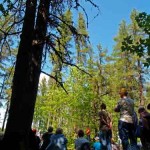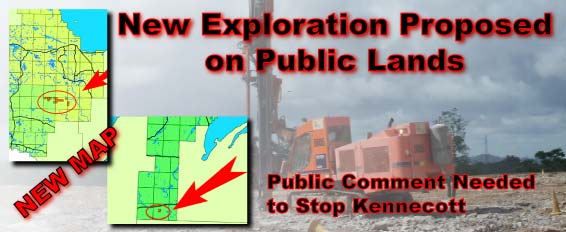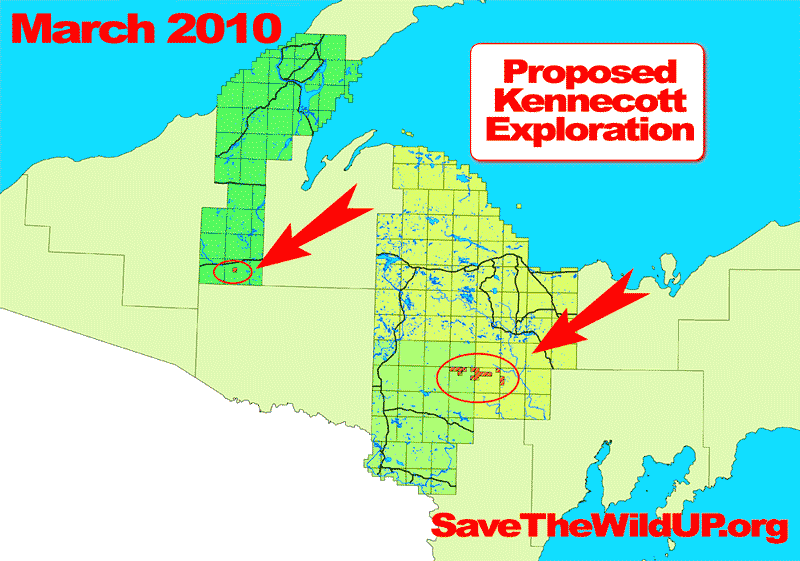Protect the Earth Gathering UPDATE!
Make your plans now for a ride to the Protect the Earth Great Lakes Community Gathering SATURDAY, AUGUST 6th, at Van Riper State Park
We are calling upon:
a. All those who can drive and take some folks in their vehicle.
b. All those who need a ride.
If you can drive, let us know: a.) from where b.) how many people you can take in your vehicle. Call 906-250-3284.
If you need a ride, let us know. We hope to have drivers from Marquette, Houghton/Hancock, Baraga/L’Anse, and Big Bay. Don’t wait until the last minute … you’ll be up on the roof rack!
ALSO: If you can please bring a lawn chair.
To make a Van Riper camping reservation, call 1-800-447-2757, or reserve a spot at the park entrance.

You are cordially invited to attend the 4th Protect the Earth Great Lakes Community Gathering on Saturday, August 6th at Van Riper State Park in Champion, Michigan. This year’s theme is “Coming Together: Uniting for Strength and Success.”
The purpose of the gathering is to seek ways in which the citizens of the Upper Great Lakes Region can work together more effectively to defend their water resources against the threat of new extraction projects.
Speakers will focus on proposed activity that threatens the health of the region including the controversial Eagle Project on the Yellow Dog Plains and Hud Bay’s proposed Front 40 Project for zinc and gold takings in Menominee Co., according to conference organizer Margaret Comfort.
Also on the program are “Fracking” of gas wells in lower Michigan, proposed extractive resource projects in the Penokee Hills of Wisconsin, and proposed copper-nickel sulfide projects in NE Minnesota, plus a special presentation on environmental justice and indigenous cultural issues.
The gathering is free to interested participants. It will begin with an optional walk at 9:00 a.m. from Koski’s Corner (intersection of US-41 and M-95) to the proposed Humboldt processing facility, approximately 2.5 miles round trip. The focus of the walk is to raise awareness of the importance of defending local water resources. Rides back to the cars will be available.
The main conference will be held in the Van Riper Park Pavillion beginning with lunch at 11:30 a.m. Al Gedicks (WI), Frank Koehn (WI), Bob Tammen (MN) are among the highlighted speakers scheduled from 1:00-4:30 p.m. A round-table discussion from 4:30-6:00 p.m. will involve threats to health due to heavy metals, sustainable alternatives to dead-end industries, and recent Michigan legislation limiting townships’ zoning authority over extractive industries. Participants will address ways of working more effectively together.
The day will close with a catered supper and an ‘open mic’ session, according to Comfort. While there is no charge, seating is limited to 100 people. Attendees can e-mail info@savethewildup.org, or call (906) 662-9987 to reserve a place at the gathering or arrange for carpooling from Marquette, Big Bay, or Houghton.
This event is sponsored by WAVE – Water Action Vital Earth – working for clean water and a sustainable future, and Save the Wild UP, protecting the Upper Peninsula from environmental degradation and dangerous contamination.
Make your reservations for Protect the Earth 2011 NOW. Seating is limited to 100 people – make SURE this includes YOU !!!
Please bring lawn or folding chairs – thanks!
LODGING OPTIONS FOR PROTECT THE EARTH GATHERING – Saturday August 6th
Van Riper State Park – “in the Heart of Moose Country” –located 35 miles west of Marquette on US-41.
1. Camping at Van Riper State Park (VRSP – call 906-339-4461) – as of 7/13/11, the following options are available:
a. “Group Campsites” along the Peshekee River – must reserve at least FIVE sites, each site costs $12 per night. Rustic with vault toilet. 1/2 mile to main park entrance – nice walking trail. Very beautiful area ! Must call VRSP to reserve.
b. “Group Cabin” along Peshekee River – sleeps six in bunk beds. No kitchen. Rustic with vault toilet. 1/2 mile to main park entrance – nice walking trail. Outfitted with aluminum flat-bottom boat, oars, PFDs. $50 per night. Bring your own linens. Call VRSP to reserve.
c. “Modern Cabin” along shores of Lake Michigamme – gorgeous sunsets. At the main campground. Brand new! No kitchen. Vault toilet. Sleeps six in bunk beds and one fold-out bed. $80 per night. Bring your own linens. Call 1-800-44-PARKS to reserve.
d. “Modern Campsites” – at the main campground. $21 per night. Includes electrical hook-up. Flush toilets and warm showers.
Call 1-800-44-PARKS to reserve.
2. Area Motels and Cabins
a. Lake Ruth Resort in Twin Lakes (Rte 41, about 12 miles W of VRSP) – as of 7/13/11, two large motel rooms with AC and fully-equipped kitchenettes are available for nights of Aug 5 and Aug 6. $70 per night. Also available are two cabins, each with bed and stand-up shower, at $60 per night (but no AC). New, clean, and well-appointed. Right on Ruth Lake! Call 906-323-9022 to reserve.
b. L’ Anse Motel (approx 40 miles West on Rte 41) – 906-524-7820, some rooms available at $45 (for two) and $55 (for four people)
c. Hilltop Inn in L’ Anse – 906-524-6321 or 800-424-2548 – rooms are available for the 5th and 6th, at $54 per night
d. Best Western (in W. Ishpeming, approx 18 miles East on Rte 41) – 906-485-6345 or 800-528-1234
MEAL OPTIONS AND ADDITIONAL LODGING OPTIONS FOR PROTECT THE EARTH GREAT LAKES COMMUNITY GATHERING –
A. ADDITIONAL LODGING OPTIONS: these lodgers do have availability on Aug 5th and 6th (as of 7/24/11 a.m.)
i. Maple Ridge Resort – on Lake Michigamme 906-323-6334, $105 per night – 1 queen-sized bed with complete kitchen
ii. Streak-Ed Water Resort – also on the Lake 906-323-6169. $80 per night – cabin with full-sized bed & complete kitchen, bring bath towels
B. MEALS –
Best Friday Night Fish Fry in the Universe – Hometown Cafe right in Michigamme – call 323-6323 – open 8 am to 8 pm every day. Breakfast is served all day.
Mt. Shasta Restaurant – on Rte 41 – right at Michigamme. Call 323-6212. Good Fish Fry too. Part of “Anatomy of a Murder” was filmed here!
Lunch and Dinner only.
Francois Cafe – at intersection of Rte 41 and Rte 95 – where the Walk will begin on Saturday a.m. – phone 339-0013 – open 7 am to 7 pm.
For those travelling from the West:
a. Covington – The Hardwood Steakhouse – delicious Ruebens (with their own homemade red slaw), French Onion Soup, Steaks – 4 miles WEST of the Covington Junction (Rte 41 and Rte 141) – call 355-2712
a. L’Anse – HillTop Restaurant (adjacent to HillTop Motel): 524-7858
b. Baraga – Best Western Lakeside Inn (a beautiful view of Keweenaw Bay and good fish!, also Lodging) – 353-7123
c. Baraga – Oibwa Casino Resort and Migizi Wadiswan Restaurant – 353-6333 (Lodging) and 353-4494 (Restaurant)
For those traveling from the East:
Fine Dining in Beautiful Marquette:
a. Casa Calabria (Italian) at 1106 N. 3rd St. (228-2088) – lunch & dinner
b. Coco’s – 911 Lakeshore Blvd (overlooking Lake Superior) – call 228-2680 for lunch & dinner.
c. The Vierling – a classic MQT establishment with beautiful view of Lake Superior – near the corner of Front St. and Washington St.
d. Rubiyat (Indian cuisine) – 119 W. Baraga (right next to the MQT Coop) 228-7800
e. Sai Uwa Thai Bistro – what a delight! – 228-8424 – on Front St. just 1/2 block N. of Washington St.
f. SweetWater Cafe 517 N. 3rd St. 226-7009
g. UpFront and Co. 102 E. Main St. 228-5200
Fine Dining in Beautiful Ishpeming:
a. Mama Mia’s (Italian) at 207 E. Pearl St. (485-5813)
b. World’s Best Italian Beef Sub: Ralph’s Italian Deli (corner of Rte 41 and Palms Ave.) call 485-4557
IF YOU HAVE ANY QUESTIONS, JUST GIVE US A CALL AT 906-228-4444 or 906-250-3284
SEE YOU THERE !

 Recently the DNRE announced a public comment period for leasing over 4000 acres of mineral rights to Kennecott for further exploration. The exploration would take place in Southern Marquette County, Northern Dickinson County, and Southern Houghton County.
Recently the DNRE announced a public comment period for leasing over 4000 acres of mineral rights to Kennecott for further exploration. The exploration would take place in Southern Marquette County, Northern Dickinson County, and Southern Houghton County.

